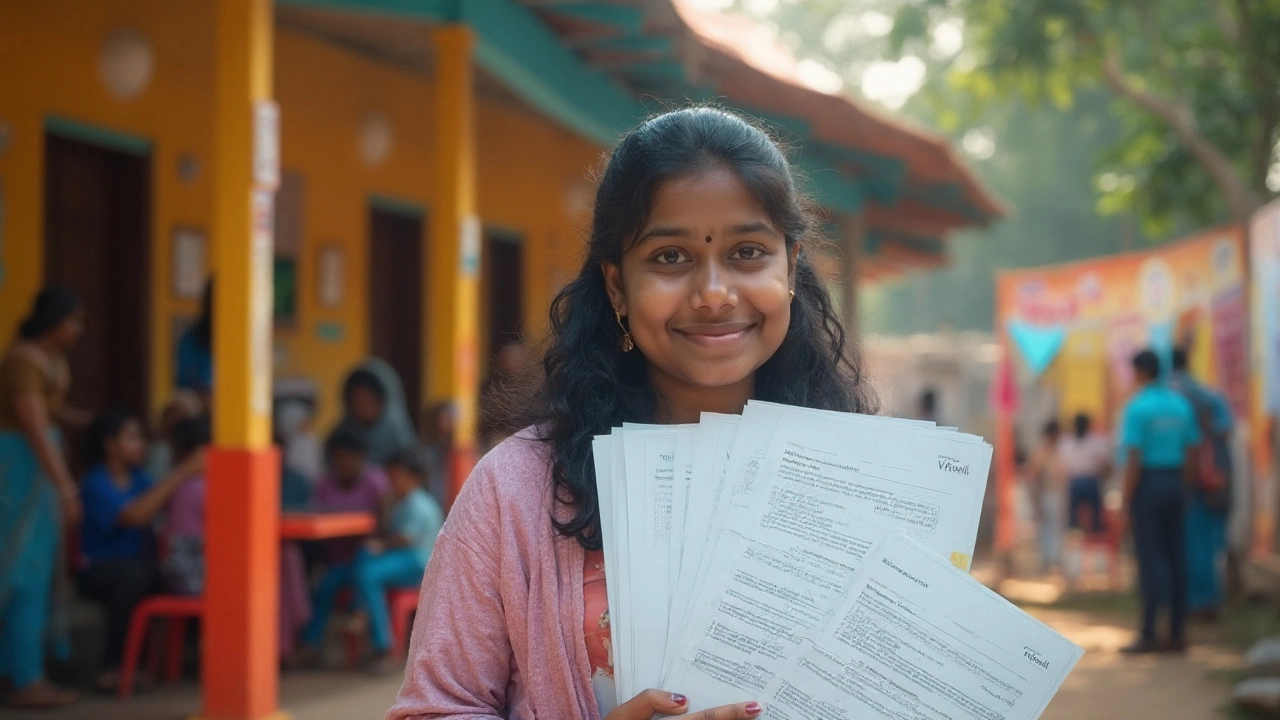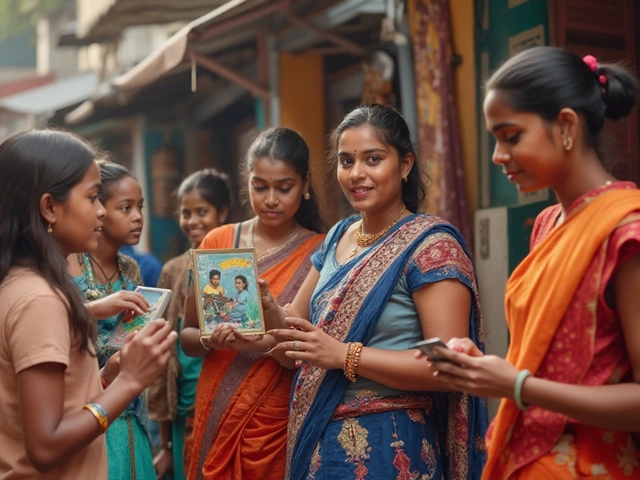Ever spent weekends stacking food pantry shelves or late nights organizing community cleanups, only to hear, “How do I know you actually volunteered?” Gathering proof for your volunteer work isn’t just about bragging rights. Schools ask, jobs want it, even grants and scholarships look for the “volunteered” tick. But what does real proof look like? Not a vague smiley face on a sign-in sheet, that’s for sure. There’s an art and a bit of a science to it, and knowing the ropes saves you hassle down the road.
Why Proof of Volunteering Matters More Than You Think
Volunteer work does more than pad your resume—it can change your life and someone else’s. The trick? Actually proving you did what you said you did. Organizations, campuses, and employers don’t want to take your word on a handshake. Imagine you’re applying for a competitive college—everyone says they “love helping people,” right? Schools know that, so they want receipts, not just good intentions. In fact, the National Association of Colleges and Employers found that more than 58% of recent job applicants included volunteer work on resumes, and nearly half of all HR managers looked for evidence or verification.
The skepticism isn’t personal. Fraud in volunteering claims has increased, especially with digital resumes flying around. Some folks try to fluff their hours or invent events. So, rules around confirmations got tighter. You wouldn’t show up at an airport with a scribbled note instead of a passport. Volunteer proof works the same way—it needs to stand up to an extra eye or two.
This matters for more than just applications. Sometimes verified volunteer hours are required for court orders, scholarships, graduation, or even professional certifications. Missed a single signature? That’s months of work down the drain. You want proof that’s bulletproof—no awkward calls, no eyebrows raised.
And here’s something most people miss: the best proof helps you reflect on what you learned and who you impacted. Reading through people’s thank you notes or staff feedback can remind you of the real reason you signed up in the first place. It’s not just about impressing someone—it’s about capturing the moment you made a difference.
Let’s not forget the networking angle, either. When your volunteer role is officially recorded and recognized, that supervisor or coordinator might become your next reference or advocate. Nail the proof, and you might find your next big break comes from someone you met while serving others.
Types of Proof: What Actually Counts?
If you’re picturing a dusty paper certificate shoved at the end of a drawer, you’re not alone. But proof of volunteering comes in more shapes and sizes than most realize. The most common—and accepted—formats break down like this:
- Official Certificates: Most professional organizations, charities, and nonprofits will print or email official certificates that list your name, hours, role, and dates. These carry weight because they’re hard to fake.
- Signed Letters: A favorite for colleges and immigration officers, these provide more detail about your contributions. Ideally, the letter comes on organization letterhead and is signed by a supervisor or coordinator. Bonus points: extra comments about your attitude, special projects, or leadership.
- Log Sheets and Timesheets: If you volunteered regularly, these documents record each day and hour you served. Best case, each entry is initialed by your supervisor. These are gold for service hour requirements or tracking ongoing commitments.
- Digital Verifications: Some organizations now offer online dashboards or apps where you can log in and download a "volunteer history" report. These can be super useful for sharing links or PDFs with whoever needs proof, especially for remote volunteers. The points-based verification systems from sites like VolunteerMatch or All for Good are picking up steam.
- Photos and Media: While not the go-to proof, photos showing you in action (ideally with an organization logo or event banner in the background) can help. Back them up with event links or press mentions for extra credibility.
- References or Endorsements: Sometimes, it’s as simple as listing a real contact who can vouch for you. Just make sure you actually did what you say—the call might come.
Here’s a quick look at how common each type is, based on a 2024 survey of 1,000 nonprofit organizations:
| Type of Proof | Recognized by Schools (%) | Used by Nonprofits (%) |
|---|---|---|
| Official Certificates | 89 | 74 |
| Signed Letters | 81 | 59 |
| Log Sheets | 68 | 57 |
| Digital Reports | 45 | 39 |
| Photos/Media | 23 | 29 |
Keep in mind, just sliding a selfie with a soup ladle across the table won’t do the trick. Every school and employer can have different standards, but these are the ones that usually pass the test. And yes, more and more groups are moving to digital proof—faster for everyone, easy to verify, and impossible to misplace.
Want to beef up credibility? Use a combination. Submit an official certificate along with a glowing letter or printout from your digital volunteer profile. The more dots they can connect, the more they’ll trust you went the extra mile.

How to Gather, Store, and Share Your Volunteer Proof
Getting proof isn’t automatic. Some organizations hand it over without asking, but most need a nudge. Here’s how to make sure your trail of good deeds is easy to find and bulletproof when someone asks for proof.
- Start with Organization Policy: Every group does things differently. On day one—or before you sign up—ask if they provide certificates, sign letters, or log your hours. Some volunteer platforms even include an online portfolio that grows as you do.
- Use Official Communication: Communicate through official channels to request proof—think organization email addresses, not personal chats. This shows you’re taking your contribution seriously.
- Request in Advance: Don’t wait until the last day. Ask about certificates or letters at least a week (preferably two) before your last shift, especially if there’s an admin process.
- Be Specific: When requesting a letter, share exactly what needs to be included (dates, roles, highlights). Most coordinators are happy to personalize if they have guidance, and it saves time for both of you.
- Keep Digital Copies: Scan paper certificates, save emails, and download digital reports. Back everything up on a cloud folder—Google Drive or Dropbox are perfect. If your phone falls in a lake, you can still pull up proof from anywhere.
- Store Originals Safely: If you get official letters or awards, store them in a safe spot—think labeled folders or a small home safe with other important documents.
- Track Your Own Hours: Even if your organization tracks hours, keep a log for yourself. Write down the dates, times, contact names, tasks, and a short description of what you did. If someone ever asks, you can fill in gaps or spot errors.
- Get Contact Info: Hold onto direct contact information for your supervisor or coordinator. People change jobs often, so verify their title and best email before you leave. That way, if your proof ever goes missing, you know who to call.
- Bundle Documentation: When sharing proof, tie in multiple sources—certificate plus a thank you email, or a printed log plus a team photo. A neat "volunteer portfolio" looks a lot more serious than a single crumpled letter.
- Stay Updated: As soon as you complete a workshop, finish an event, or wrap up a season, log it immediately. Memories fade—details from six months ago are not as sharp, so make it a habit to document everything right away.
I’ve talked to college admissions staff who say the best applicants hand over organized, detailed, and verified proof. No confusion, just a quick check and a nod. Want to go above and beyond? Create a short document that has your volunteer summary, proof attached, and a personal reflection about why it mattered. A little effort now saves a mountain of headaches later.
Troubleshooting and Special Cases
What if your organization doesn’t offer formal proof, or you volunteered somewhere informal, like helping an elderly neighbor with yardwork? This is where most people get stuck, but all is not lost. The trick is to be creative—while keeping it credible.
- Supervisor Left the Organization? Track down their new contact info (LinkedIn is a lifesaver). A letter from a former supervisor on their personal letterhead can still work, especially if they include a way for someone to follow up. Always clarify their relationship to the organization.
- No Formal Records? Write a detailed description of your role, with dates, hours, and examples of your activities. Ask someone you volunteered alongside—another volunteer, a community member, or a staff person—to write a signed statement. If you took pictures at the event or received thank-you notes, include those as supporting materials.
- Informal Volunteering? This is common in smaller communities or grassroots events. Keep thorough notes for yourself and collect anything that proves you were present—event flyers with your name, emails confirming tasks, or even testimonials from those you helped. Offer a phone number (with permission) as a reference.
- Lost My Certificate! Reach out—most groups can resend or reissue proof if you volunteered recently enough. That’s why storing digital copies really pays off.
- Organization Closed? This is tougher, but not impossible. Gather emails, texts, or even media clippings about the event with your name. Reach out to community members who also participated—they might have kept records or still be in touch with someone who can help.
Here’s an insider tip: if you’re asked for proof later on and you don’t have an official letter, a chain of emails confirming your volunteer work is better than nothing. Attach all relevant emails, highlight your name, and add a note explaining the situation. Most people will appreciate your effort and honesty. Faking proof, on the other hand, is a one-way ticket to losing trust—and maybe bigger opportunities down the line.
Need something extra? Some platforms, like Verified Volunteers and VolunteerMatch, now allow organizations to link digital badges to your profile, making it much easier for employers or schools to authenticate your work. If you’re a regular on these sites, check your profile and update it regularly.
Think outside the box for special cases—did a local paper snap your picture unloading boxes, or did your school newsletter mention you as a volunteer leader? Even a screenshot of a social media post from the official event page helps. Just remember, these aren’t substitutes for real documentation—but they sure help in a pinch.






